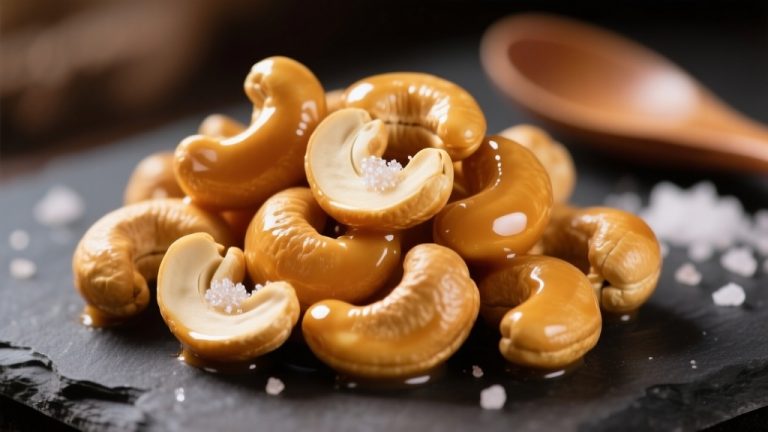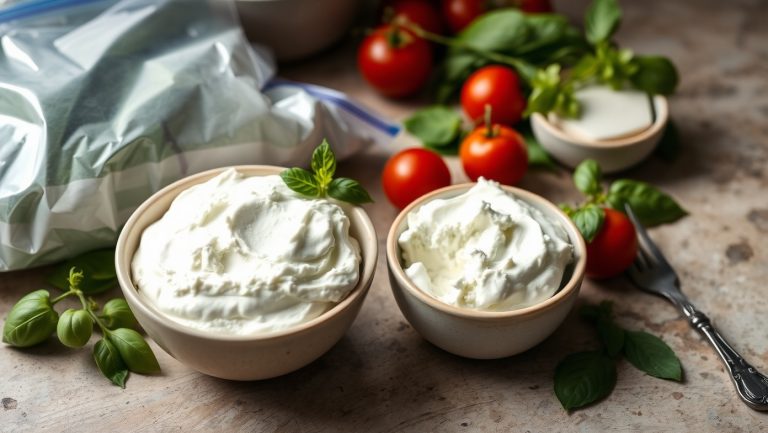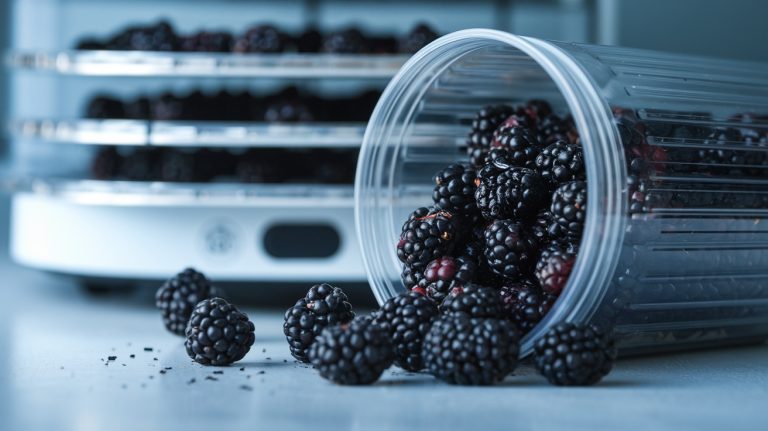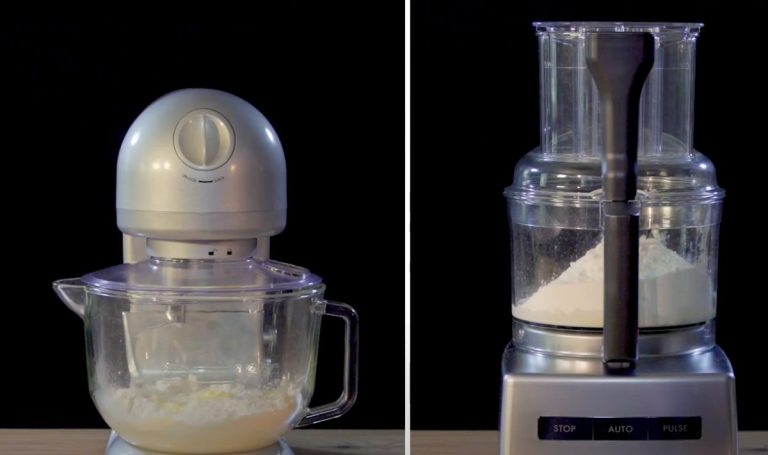Coconut Protein Bar Recipe: Easy, High-Protein Snack
You can make coconut protein bars by mixing milk or plant-based protein powders with shredded coconut, oats, natural sweeteners like honey, and coconut oil.
Blend dry ingredients first, then combine with melted oils and syrups to form a sticky dough. Press into a pan and bake or chill until firm.
Customize flavors with vanilla or nuts, and adjust for vegan or low-sugar needs. These bars offer balanced macros and sustained energy.
Explore how to optimize texture, nutrition, and storage next.
Key Takeaways
- Combine protein powders, shredded coconut, natural sweeteners, and coconut oil to form a sticky dough for coconut protein bars.
- Bake at 350ºF for 14 minutes or chill to create baked or no-bake coconut protein bars.
- Add flavors like vanilla, cocoa, or nuts to enhance taste and texture in coconut protein bars.
- Use plant-based proteins and gluten-free oats for vegan or allergy-friendly coconut protein bar variations.
- Store bars in airtight containers, refrigerate up to one month, or freeze for longer shelf life.
Easy Coconut Protein Bar Recipe Guide for Home Cooks
| Ingredients / Tools | Steps / Actions |
|---|---|
| 1 cup oats | Mix all dry ingredients in a large bowl. |
| ½–1 cup shredded coconut | Add protein powder, shredded coconut, and salt. |
| ½ cup protein powder (whey or plant-based) | Pulse nuts or puffed rice if adding crunch. |
| 2–3 tbsp coconut oil (melted) | Melt coconut oil gently and combine with sweeteners. |
| 3–4 tbsp honey, maple syrup, or date syrup | Pour wet mixture into dry mixture. Stir to form sticky dough. |
| ½ tsp vanilla extract (optional) | Press dough firmly into a lined baking dish. |
| Optional add-ins: nuts, cocoa, dried fruit, citrus zest, seeds | For baked bars: Bake at 350ºF for 14 minutes. |
| Mixing bowl & spatula | For no-bake bars: Chill until firm for clean slicing. |
| Baking dish or pan | Refrigerate or freeze for storage. |
Ingredients Needed for Coconut Protein Bars
Several key ingredients form the foundation of coconut protein bars, each contributing specific nutritional and sensory qualities. You’ll often rely on milk protein powders like whey or milk powder for a high-quality protein boost.
Plant-based options such as pea, brown rice, or hemp protein powders work well in vegan bars. Unsweetened shredded coconut flakes provide flavor and texture, while coconut oil enhances mouthfeel and nutrition. This recipe can be combined with milk chocolate, which makes up about 19% of the bar, to enrich flavor and texture. Regular maintenance extends knife lifespan and improves performance.
Natural sweeteners like honey, coconut nectar, or organic cane sugar offer energy without excessive glycemic impact. To improve texture and moisture, ingredients like brown rice syrup or evaporated coconut water come into play.
Healthy fats from nut butters or various plant oils support both flavor and texture. Additional elements like cocoa powder, fiber sources, and natural flavors round out your ingredient list. It is important to note that some protein bars use sweeteners such as maltitol and polydextrose to maintain sweetness without added sugar.
Step-by-Step Preparation Process
When preparing your coconut protein bars, start by accurately measuring and thoroughly mixing the dry ingredients to guarantee even distribution of flavors and textures. Using a dehydrator sheet can help prevent sticking and make cleanup easier during drying if you opt for dehydrated bars.
Combine oatmeal, sifted protein powder, shredded coconut, and a pinch of salt in a large bowl, pulsing nuts or puffed rice beforehand if desired.
Mix oatmeal, sifted protein powder, shredded coconut, and salt, adding pulsed nuts or puffed rice if you like.
Next, gently melt coconut oil and whisk with sticky sweeteners and vanilla extract, avoiding overheating to maintain nutrient integrity. Using high-quality honey or a substitute like date syrup can enhance the flavor of your bars.
Gradually pour the wet mixture into the dry blend, stirring continuously until achieving a sticky dough-like consistency.
Transfer to a lined pan and press firmly, smoothing the surface to assure uniform thickness.
For baked bars, bake at 350ºF for 14 minutes, then cool completely before refrigerating to set.
No-bake bars require chilling until firm, facilitating clean slicing and structural integrity.
Tips for Customizing Your Bars

You can definitely customize your coconut protein bars to match your taste! Want to add a little extra flavor? Try mixing in some cocoa powder or a splash of vanilla extract. It’s a simple way to make them feel more personal to you.
When it comes to texture, the possibilities are endless! You can switch up the ingredients like nuts and fibers to achieve that perfect balance between chewiness and crunch. It really depends on what you’re in the mood for. Many people prefer using unsweetened protein powders for a less artificial taste. Considering material durability can also help you choose the right tools and containers for storing your bars to maintain freshness.
Also, don’t forget about your dietary needs! This is a great opportunity to choose your protein sources and sweeteners based on your nutritional goals. So go ahead, make those bars truly yours!
Flavor Enhancements
Although the base coconut protein bar provides a solid foundation, enhancing its flavor through strategic pairings and additions can substantially elevate the taste experience.
Classic combinations like chocolate and coconut boost appeal, supported by a 21.8% rise in consumer interest. You can intensify coconut notes with ¼ teaspoon coconut extract or add vanilla for balanced sweetness. Using vanilla whey protein powder instead of unflavored protein can also contribute to a richer flavor profile. To complement these flavors, consider incorporating a creamer with a rich, velvety texture to enhance mouthfeel.
Introducing nuts such as almonds or cashews enriches flavor and texture, while dried fruits like dates or cranberries contribute natural sweetness and depth.
Citrus zest brightens the profile, and a pinch of salt enhances overall flavor perception. For variety, consider spices like cinnamon or cardamom sparingly to avoid overpowering the coconut.
These flavor enhancements allow you to tailor your bars scientifically and deliciously.
Texture Adjustments
Because texture plays a crucial role in the enjoyment and structural integrity of coconut protein bars, careful adjustments during preparation can enhance firmness, chewiness, and mouthfeel.
You’ll want to balance ingredient processing and binder selection to achieve the ideal consistency.
- Avoid over-processing coconut shreds to prevent oily, gluey textures. Use nut butters and sticky sweeteners like maple syrup to enhance binding and moisture retention. This is especially important since the recipe contains only 4 ingredients plus water.
- Incorporate protein powder gently and in balanced amounts to prevent dryness or chalkiness. Combine it evenly with other ingredients for smooth texture.
- Add crunchy elements such as toasted nuts or puffed rice to introduce texture contrast. Chill bars thoroughly to solidify fats and maintain structural integrity.
These targeted adjustments help you customize your bars for optimal sensory appeal and handling.
Dietary Modifications
Adjusting the texture of your coconut protein bars sets the stage for tailoring their nutritional and dietary profiles to fit various needs. Proper storage in airtight containers is crucial to maintain freshness and prevent moisture from affecting texture.
To customize allergen content, replace dairy or soy proteins with plant-based options like pea or brown rice protein.
Swap coconut flakes for almond or sunflower seed flakes if needed. These bars contain allergen information including Milk, Soy, Eggs, Almonds, Peanuts, Coconut, which should be considered when customizing.
Modify sweetness by balancing natural sweeteners such as oligofructose with non-nutritive options like sucralose.
Adjust dried fruit ratios for desired glycemic impact.
Protein sources can be blended to ensure a complete amino acid profile, enhancing nutritional value.
For fats, choose plant-based or modified fats to meet vegan or ketogenic goals while maintaining texture.
Finally, fortify with vitamins, minerals, omega-3s, and fiber to meet specific dietary requirements.
Ensure your bars support targeted health outcomes.
Nutritional Information and Benefits
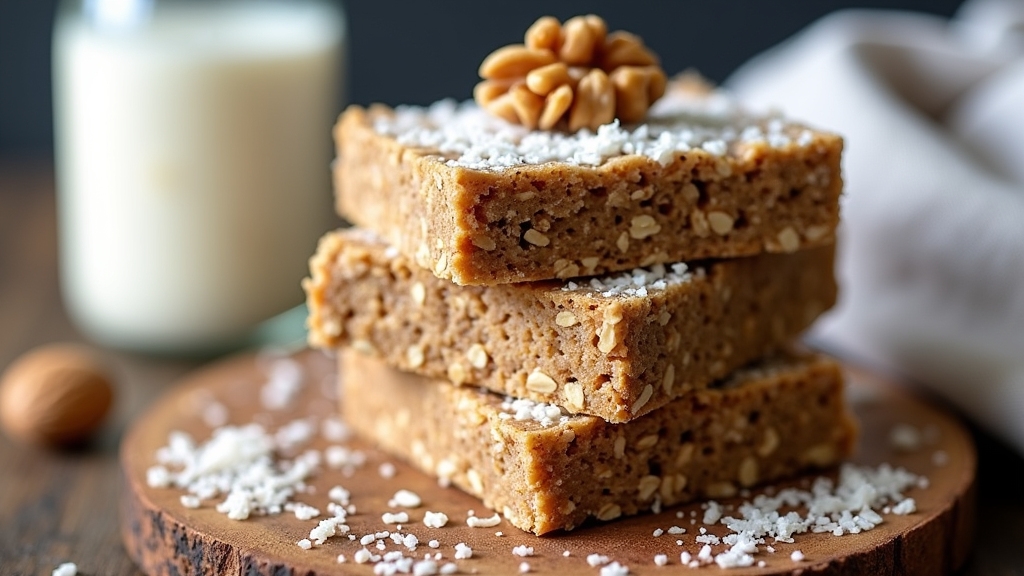
When you’re whipping up your coconut protein bars, it’s super helpful to know the calorie and macronutrient breakdown. This way, you can customize them to meet your energy needs!
Typically, each bar packs about 15 to 20 grams of protein, which is fantastic for muscle repair and keeping you feeling satisfied for longer.
Plus, the great thing is you can tweak the ingredients to align with your dietary preferences. Whether you’re looking for gluten-free options, plant-based ingredients, or something low in added sugars, there’s a way to make it work for you! The bars can provide up to 20 g of protein per serving, making them a nutritious choice for supporting muscle growth and recovery.
Calorie and Macro Breakdown
Coconut protein bars typically provide between 140 and 300 calories per serving, depending on their protein, fat, and carbohydrate content. You’ll notice bars with added nuts or chocolate tend to be higher in calories.
Understanding the macro breakdown helps you choose the best option for your dietary needs:
- Fat: Ranges from 13g to 17g, mainly from coconut oil, nuts, and seeds. Saturated fat varies between 3.5g and 7.4g, offering sustained energy and satiety.
- Carbohydrates: Total carbs are around 24g to 25g with fiber from 3g up to 10g, which supports digestion and moderates blood sugar impact. Many bars also include organic raw cacao, pumpkin seeds, chia seeds, coconut oil, and vanilla bean, which contribute additional nutrients and flavor.
- Sugar: Varies widely, from as low as 3g to 16g, often sourced from natural sweeteners like coconut nectar or dates.
This balance makes coconut bars a nutrient-dense snack option.
Protein Content Benefits
How much protein do you really get from protein bars, and why does it matter? Coconut protein bars typically provide 12 to 22 grams of protein per serving, depending on the ingredients. For those seeking balanced nutrition, it’s important to consider that many popular side dishes, like Zippy’s Macaroni Salad, offer complementary macros that can round out a meal.
This protein, often from whey, milk concentrate, or pea sources, supports muscle repair and growth, especially post-exercise. Bars with 20 grams or more effectively stimulate muscle protein synthesis and accelerate recovery. Each bar contains 15g of plant-based pea protein, supporting daily protein needs and providing a sustained energy boost.
Beyond muscle benefits, protein increases satiety by slowing digestion, which can help control appetite and support weight management. Many bars also include collagen peptides, which may enhance joint and connective tissue health.
The protein’s bioavailability varies by source. Whey and milk proteins are efficiently absorbed, while plant-based blends assure a complete amino acid profile.
Dietary Suitability Options
Although protein bars offer convenient nutrition, their dietary suitability depends on various factors such as allergens, sugar content, fat quality, and fiber levels.
When choosing a coconut protein bar, consider these key aspects:
- Allergens & Dietary Preferences: Check for gluten-free labels if sensitive. Note common allergens like milk, soy, nuts, and possible cross-contamination. Some protein bars are designed with specialized equipment to avoid cross-contact with allergens.
- Sugar & Sweeteners: Sugar content ranges widely. Some bars use natural or alternative sweeteners, while others contain high added sugars (14–16g per serving). Excessive polyols may cause digestive issues.
- Fat & Fiber Content: Healthy fats come from coconut oil and nuts, providing medium-chain triglycerides. Fiber varies from 3g to 10g, aiding digestion and influencing glycemic response. Consider these for heart health and blood sugar management. Additionally, protein bars typically weigh around 80 g, which can help you gauge portion size and nutritional intake more accurately.
Storage and Shelf Life
When you want to keep your protein bars fresh and safe to eat, proper storage is essential. Store your coconut protein bars in airtight containers to prevent moisture loss and contamination. Desiccated coconut’s natural long shelf life helps maintain the bars’ freshness over time. Decorating storage containers or packaging with personalized labels can add a charming touch to your homemade treats.
Refrigeration extends their shelf life up to one month by slowing bacterial growth and maintaining texture. Individually wrapping bars in wax or plastic wrap helps retain moisture.
For longer storage, freeze bars wrapped tightly; they remain good for up to six months without losing quality. Thaw frozen bars in the fridge or at room temperature before eating.
Some bars with stable ingredients can be stored at room temperature up to four weeks, but avoid heat and sunlight to prevent spoilage.
Always check for mold, off odors, or texture changes, and discard bars if these spoilage signs appear.
Variations to Suit Different Diets
Proper storage helps preserve the integrity of your coconut protein bars, but tailoring the recipe to fit specific dietary needs ensures they meet your nutritional goals.
You can adjust protein sources, sweeteners, and fats to create bars suitable for various diets without compromising texture or taste. The recipe is naturally gluten-free and can be easily modified for vegan and sugar-free diets, making it highly versatile.
Consider these variations:
- Protein Sources: Use pea or brown rice protein for vegan diets. Whey isolate or egg whites suit omnivores. Coconut protein powder enhances flavor and fits paleo or low-carb needs.
- Sweeteners: Choose honey or maple syrup for paleo diets. Agave nectar works for vegan options, or sugar-free substitutes for keto and low-sugar plans, adjusting liquid amounts accordingly.
- Fats and Flours: Opt for coconut oil or almond butter for healthy fats. Use coconut flour or gluten-free oats to accommodate grain-free or gluten-sensitive diets.
Frequently Asked Questions
Can Coconut Protein Bars Help With Muscle Recovery After Workouts?
Yes, coconut protein bars can help with muscle recovery after workouts. They provide high-quality protein that supplies essential amino acids needed for muscle repair and growth.
The added coconut offers beneficial fats like MCTs, supporting energy metabolism during recovery. Eating one shortly after exercise promotes faster muscle repair, reduces soreness, and sustains energy.
Plus, their convenience guarantees you can consistently meet your post-workout protein needs efficiently.
What Is the Best Time to Eat Coconut Protein Bars for Energy?
You should eat coconut protein bars about 30–60 minutes before exercise to boost energy.
Also consider a post-workout snack within 30 minutes to aid recovery.
Before workouts, the protein and carbs fuel muscles and prevent fatigue.
After, they support repair and replenish glycogen.
Timing matters; too soon may cause discomfort, too late misses the anabolic window.
Balancing intake around exercise optimizes performance and recovery efficiently.
Are Coconut Protein Bars Suitable for Children or Elderly People?
You can offer coconut protein bars to children and elderly, but with caution.
They provide valuable protein and nutrients supporting muscle and bone health.
However, watch for added sugars, allergens, and high fiber, which may cause digestive issues or allergic reactions.
For elderly, consider chewability and sugar content.
Always check ingredient labels and balance bars within a varied diet to avoid nutrient imbalances or discomfort in sensitive individuals.
How Do Coconut Protein Bars Compare to Other Protein Snacks?
Funny enough, if you’re comparing protein snacks, coconut bars stand out by offering a balanced mix of protein, healthy fats, and fiber, unlike many that focus just on isolated proteins.
You’ll find they typically have lower sugar and fewer artificial additives, which means they’re a cleaner choice.
Plus, their MCT content from coconut can boost energy metabolism.
Can I Make Coconut Protein Bars Without a Food Processor?
Yes, you can make coconut protein bars without a food processor.
Simply mix dry ingredients like oats, shredded coconut, and protein powder in a bowl.
Then add wet ingredients such as nut butter and honey.
Stir until a sticky dough forms, press it into a pan, and chill to set.
This method is efficient, requires minimal equipment, and maintains texture and flavor comparable to processed versions.
Try Your Next Batch With New Flavors and Nutrition Tweaks
Now that you know how to mix, mold, and chill your coconut protein bars, you’re ready to fuel your day with nutritious energy.
You can customize flavors, adjust sweetness, and tweak textures to fit your needs. By understanding ingredients and storage, you’ll guarantee freshness and maximize benefits.
Keep experimenting, keep refining, and keep enjoying a balanced snack that supports your goals. Making smart, tasty choices has never been easier or more satisfying.



